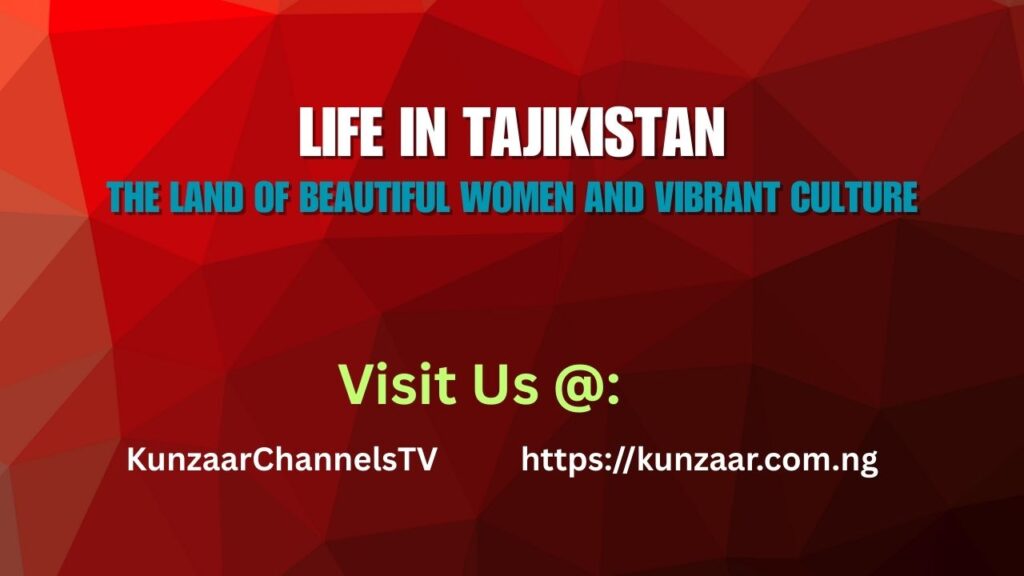Introduction
Tajikistan, is a country located in Central Asian gem, is often described as the land of beautiful women, majestic mountains, and vibrant culture. Nestled between Afghanistan, Uzbekistan, Kyrgyzstan, and China, this country is known for its breathtaking landscapes, Silk Road heritage, and warm hospitality. A beautiful film about Tajikistan would showcase its rich traditions, colorful festivals, delicious cuisine, and the graceful charm of its people.
In this post, we’ll discover life in Tajikistan through its history, origin, food, religion, festivals, culture, and marriage traditions.
History and Origin of Tajikistan
Tajikistan has a long and fascinating history. The region was once part of the ancient Persian Empire and played a vital role in the Silk Road trade route, connecting East and West. The people of Tajikistan, known as Tajiks, are predominantly of Persian descent, and their language known as, Tajik (a dialect of Persian), reflects this deep connection.
Also Read: 7 Cultural Etiquettes That Could Save You from Embarrassment Abroad
Throughout centuries, Tajikistan has seen the influence of Greek, Arab, Mongol, and Russian empires, all of which shaped its culture. It became part of the Soviet Union in the 20th century and finally gained independence in 1991.
Food in Tajikistan
Tajik cuisine is a fusion of Persian, Russian, and Central Asian flavors. Meals often include bread, meat, rice, and dairy products. Some traditional dishes include:
Plov (Osh): A rice dish cooked with carrots, onions, and lamb.
Qurutob: A national dish made of bread, yogurt sauce, and vegetables.
Mantu: Steamed dumplings filled with meat and onions.
Shashlik: Skewered grilled meat, often served with fresh vegetables.
Tea plays a central role in Tajik hospitality, usually served with sweets, dried fruits, and nuts.
Religion in Tajikistan
The majority of Tajiks are Muslims, primarily following Sunni Islam of the Hanafi school. Islam influences many aspects of Tajik culture, traditions, and festivals. However, Tajikistan is also home to minority groups practicing Christianity, Ismaili Shia Islam, and other faiths, reflecting the country’s diverse history.
Festivals in Tajikistan
Tajikistan celebrates a variety of festivals, blending Islamic and cultural traditions:
Navruz (Persian New Year): Celebrated in March, marking the arrival of spring with music, dancing, and feasting.
Independence Day: Celebrated on September 9, with parades, cultural performances, and national pride.
Eid al-Fitr and Eid al-Adha: Important Islamic celebrations observed with prayers, charity, and family gatherings.
Christmas and Easter: Very important to those who practicing Christianity among. They celebrated it according to Christian rites and privileges.
You can Also Read: Probability Made Easy
Festivals in Tajikistan are full of color, music, traditional dress, and folk dances, making them a lively expression of the nation’s identity.
Culture and Traditions of Tajikistan
Tajik culture is a blend of Persian heritage and Central Asian influences. Poetry, music, and dance hold an important place in society. The works of classical Persian poets like Rudaki and Ferdowsi remain cherished in Tajikistan.
Tajiks traditional clothing includes:
Chapan: A long, colorful coat often worn by men.
Atlas silk dresses: Worn by women during festivals and celebrations.
Women in Tajikistan are often admired for their grace, natural beauty, and hospitality, which is why the country is known as the “land of beautiful women.”
Countries Where Tajiks Can Be Found
While Tajikistan is the homeland of the Tajik people, large communities also live in:
- Uzbekistan (especially in Samarkand and Bukhara)
- Afghanistan (a significant Tajik population resides in the north)
- Kyrgyzstan
- Russia (due to labor migration)
- China (particularly in Xinjiang)
This spread of Tajik people across borders is linked to the Silk Road and shifting empires.
Marriage in Tajikistan
Marriage in Tajikistan is deeply rooted in tradition and family values. Some common practices include:
- Arranged Marriages: While modern love marriages are increasing, many unions are still arranged by families.
- Bride Price (Kalim): The groom’s family provides gifts or money to the bride’s family.
- Wedding Ceremonies: Tajik weddings are grand celebrations that include music, dance, and feasts lasting several days.
- Traditional Dress: Brides often wear richly decorated atlas silk dresses and jewelry, while grooms wear traditional robes.
Marriage is considered a sacred union, celebrated with great joy and community participation.
Conclusion
Life in Tajikistan is a beautiful blend of history, tradition, and natural beauty. From its breathtaking mountains and Silk Road cities to its hospitality, food, festivals, and charming people, Tajikistan is a land worth celebrating. Why not visit this country to see for yourself? Hope you have been motivated? Let’s keep our cultures and other with dignity by celebrating other languages culture.
Action
How do you stay connected to your cultural identity? You can share your story using #MyCulturalCode and also comment below so as to keep our culture heritage alive! Let built ties through cultures. Also Visit our YouTube Channel: KunzaarChannelsTV through @kunzaarchannelstv to watch the best of cultural heritage.

